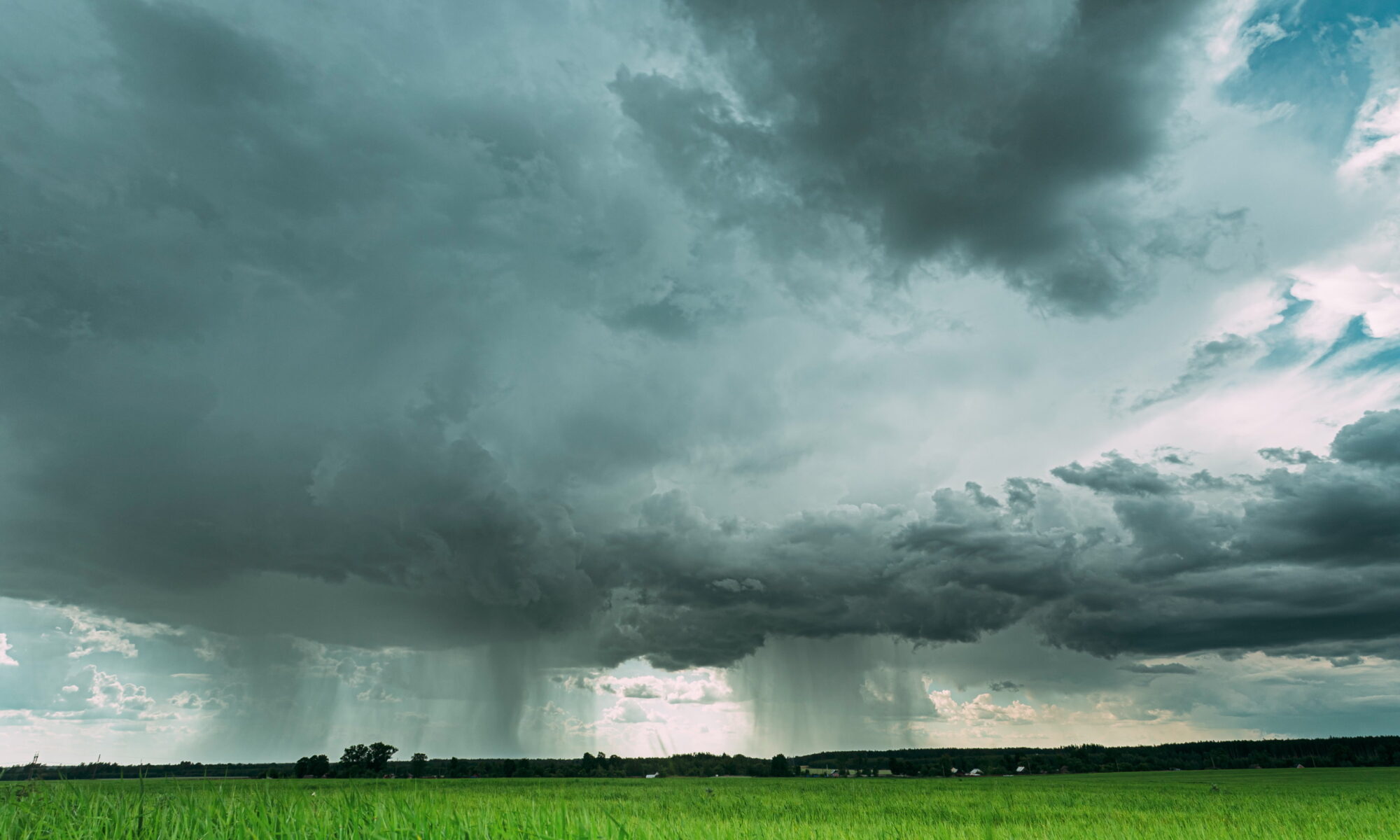The private sector is moving into the public market for U.S. flood insurance, and the public sector is welcoming it. But the big question is how to get consumers interested in protecting themselves.
About 200 attendees at the opening session of the CAS Reinsurance Seminar and the Casualty Actuaries in Reinsurance Meeting in June in Washington, D.C., heard about efforts to open the market for flood insurance to the private sector — currently a virtual monopoly of the federally backed National Flood Insurance Program (NFIP). The session was titled “Public Sector Involvement in Insurance Markets: The Government as Risk-Taker.”
Flood insurance is a hot topic in Washington. The NFIP requires reauthorization before September 30, 2017. The last reauthorization took four years and those involved are still smarting from the experience. The resulting legislation was heavily amended shortly after it was enacted, as an attempt to eliminate heavily discounted rates in flood plains was overturned after violent opposition from those whose rates skyrocketed.
The flood program has two significant issues.
First, not enough people buy it. The Insurance Information Institute polling regularly puts the penetration rate between 10 and 15 percent of homeowners. Federal officials like CARe panelist Roy Wright, deputy associate administrator for insurance and mitigation at the Federal Emergency Management Agency (FEMA), hope that a private insurance market could raise the take-up rate.
Second, the program bears a $24.6 billion debt left mainly by claims from Hurricane Katrina and, to a lesser degree, from Superstorm Sandy. If there were another enormous disaster, NFIP could borrow about $5.8 billion more, but the financial leash might not extend further. The solution? NFIP has begun purchasing reinsurance from the private market to protect its financial position.
The first purchase was last year. It involved tiny amounts and was designed as a proof of concept — that the federal government could work with the private market to place reinsurance. Having done that, a more substantive program was put in place on January 1, 2017. Under it, the private market will reimburse NFIP for 26 percent of the losses above $4 billion for any single event, up to a payment of $1.042 billion. Twenty-five reinsurers took shares, in a structure intended to comfort reinsurance markets.
Computer models for storm surge are more advanced than those for inland flooding, so reinsurers were a bit cautious about protecting against inland flood, said David Priebe, a Guy Carpenter vice chairman. He added that reinsurers are interested in covering inland flood but need better information to price and manage the risk. Hence, the $4 billion attachment point, well above the probable maximum inland flood loss.
The placement was not worry-free. Educating government stakeholders over several years through development of the Flood Insurance Risk Study was key, said Priebe. They needed to understand what reinsurance was and how it would protect the financial downside of the flood program.
There were, however, unique legal obstacles borne of federal control. For example, reinsurers had to come from countries that were compliant with the Trade Agreements Act — legislation that governs U.S. trade agreements. One of the major non-compliant states is Bermuda, one of the largest reinsurance markets in the world. Bermudian participants had to write via their U.S. subsidiaries.
Policyholder privacy was also an issue. Reinsurers are used to receiving policy-level information in modeling losses, but such detail would violate federal privacy laws. Instead, NFIP could provide information by ZIP code (now available at https://www.fema.gov/openfema). NFIP was also able to indicate where blocks of policies were — X risks within a half-mile of shore, Y risks just beyond that, etc.
What is the future for private markets and NFIP? “I don’t think there’s a walk back” from private capital, Wright said, though that might depend on how this year’s reauthorization turns out. He is interested in other reinsurance structures, particularly quota shares, once the private market gets used to reinsuring flood.

Reinsurance provides a bit more financial security, but the societal problem remains. Millions of people who need flood insurance fail to purchase it. Flood insurance has always been difficult for private markets to underwrite. There is adverse selection at both ends — people know if they live in flood-prone areas. If they do, they queue up for coverage. If they do not, they do not buy. It is also difficult to diversify the risk. When one house floods, many in the same area also flood, and an insurer whose book is concentrated in the flood zone has a steep challenge, particularly if it also wrote the homeowners coverage.
NFIP was created in the 1960s after flooding from Hurricane Betsy. Wright recounted research at the time, which asserted two things:
- If people in flood plains knew their true risk, they would move. (As he recounted this, the audience chortled.)
- Once people in the riskiest areas move, a flood insurer could charge actuarially sound rates.
So the federal flood insurance program set out to make people aware of their risk, and to make flood insurance available if communities adopted building codes that minimized flood risk. “We thought that people were rational,” said panelist Benjamin Collier, assistant professor of risk management at Temple University. He has analyzed the consequences of flood disasters and the flood insurance program. “It turns out we’re not.”
That was 49 years ago. Many remain in those flood-prone areas. Their rates remain heavily discounted. Compounding the problem is that many people assume FEMA provides free assistance after a flood. And, said Wright, they are correct, but it is meager next to flood insurance. The assistance is means-tested, so not everyone qualifies. Payouts are relatively small. For example, the average FEMA payout for last year’s Louisiana floods was $9,000. The average insurance payment was $89,000. “You can’t rebuild your life on $9,000,” he said.
Like many social programs, said Collier, flood insurance fulfills a social need for the economically disadvantaged. Usually social programs target these poorer populations directly. Flood insurance does so indirectly, as these populations are likely to live in low-lying areas, particularly inland. But NFIP’s discounts do not go only to the low-income populations. The discount follows the property, not the person. Both rich and poor get the discount, as long as their property qualifies. A better program, he said, would charge everyone an actuarial rate, then provide a voucher to those who could not afford it. It is hard to adopt that system now, he said, “because of the politics.”
Wright saw the issue differently; most people with flood insurance have a mortgage. (Federally backed mortgages require it.) That means the issue is not affordability. It is a discretionary issue for most people, and they choose, say, a Disney vacation over paying a flood premium. “Most of the folks we’re talking [about] aren’t ones you would hand vouchers to,” he said. Tax credits for insuring are an alternative to vouchers that could serve a similar objective for many homeowners with high-flood risk. “There is a big gap [for lower income people], but it’s in the rental market. A vast part of the market is left untouched. Price is a barrier there.”
These days, the private market is better equipped to write flood insurance, said Guy Carpenter’s Priebe. Insurers can get more detailed information than they could five decades ago, and they have far more sophisticated models to handle it. There is also more capital in the marketplace, both among insurers and reinsurers and the larger capital markets, which look upon property-casualty risks as a revenue stream uncorrelated with stock dips and bond defaults — meaning they can use it to build a more robust portfolio. They increasingly insure or reinsure through collateralized reinsurance and investment-linked securities, such as catastrophe bonds.
To grow, said Priebe, the private market needs:
- A sufficient pool of risks that can be diversified. That means people have to understand that they could be at risk even if they are not in a flood-prone area.
- A consumer-oriented product that is easy to purchase and coverage that is consistent with other perils homeowners insure.
- A willingness to pay the proper price along with incentives to mitigate flood risk.
Though he runs the federal program, Wright said he welcomes private competitors. Since the product has such low penetration, there are plenty of risks the private market could write without impinging on NFIP. And if private companies bring more awareness to the need for flood insurance, that knowledge will bring business to him, even if they skim off some of the risks from the federal program.













